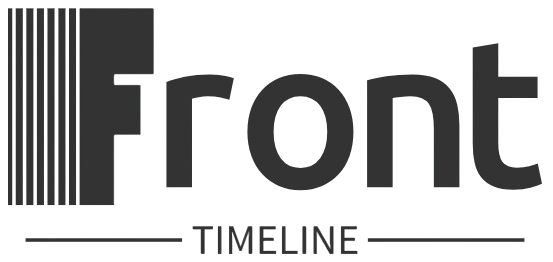The Benefits of Domain Collaboration Tools
In today’s fast-paced and interconnected world, collaboration is key to success in many industries. Whether you are working on a project with a team spread across different locations or collaborating with professionals from various domains, having the right tools can make all the difference. Domain collaboration tools have emerged as essential resources for streamlining communication, fostering creativity, and enhancing productivity. In this article, we will explore the numerous benefits of domain collaboration tools and how they can revolutionize the way we work together.
The Evolution of Collaboration Tools

Collaboration tools have come a long way since the days of email chains and conference calls. With the advent of cloud computing and digital communication platforms, teams can now collaborate in real time, regardless of their physical location. Domain collaboration tools take this a step further by providing specialized features tailored to specific industries or areas of expertise. These tools are designed to facilitate seamless communication, project management, and knowledge sharing among professionals in the same field.
Imagine a team of architects working on a design project, each contributing their ideas and feedback in a virtual workspace. With domain collaboration tools, they can easily share drawings, blueprints, and 3D models, collaborate on revisions in real time, and track the progress of the project from start to finish. The ability to work together efficiently and effectively is crucial in today’s competitive business landscape, and domain collaboration tools provide the necessary infrastructure to make this possible.
Enhanced Communication and Connectivity

One of the key benefits of domain collaboration tools is the ability to improve communication and connectivity among team members. These tools provide a centralized platform where professionals can interact, share ideas, and collaborate on projects in a streamlined manner. Whether it’s through chat channels, video conferencing, or file sharing capabilities, domain collaboration tools enable seamless communication regardless of geographical barriers.
For example, in the field of healthcare, telemedicine platforms allow doctors, nurses, and other healthcare professionals to collaborate on patient care, share medical records, and consult with specialists in real time. This not only improves the quality of care provided to patients but also enhances the efficiency of healthcare delivery. By leveraging domain collaboration tools, healthcare professionals can work together more effectively, leading to better outcomes for patients.
Increased Productivity and Efficiency

Another significant benefit of domain collaboration tools is the impact they have on productivity and efficiency. By providing a centralized platform for collaboration, these tools eliminate the need for multiple communication channels and disjointed workflows. Team members can access project updates, track progress, and collaborate on tasks all in one place, reducing the time and effort spent on coordinating work across different platforms.
For instance, in the field of marketing, content collaboration tools enable teams to create, edit, and review marketing materials in real time. From brainstorming ideas to finalizing content, these tools streamline the content creation process, ensuring that everyone is on the same page and deadlines are met. This level of efficiency and productivity is invaluable in today’s fast-paced business environment, where time is of the essence.
Improved Knowledge Sharing and Collaboration

Domain collaboration tools also play a crucial role in fostering knowledge sharing and collaboration among professionals in the same field. By providing a platform for experts to connect, exchange ideas, and share best practices, these tools facilitate continuous learning and professional development. Whether it’s through online forums, knowledge bases, or virtual workshops, domain collaboration tools enable professionals to stay up-to-date with the latest trends and developments in their industry.
For example, in the field of education, collaboration tools for teachers allow educators to share lesson plans, resources, and teaching strategies with their peers. By leveraging the collective expertise of a community of teachers, educators can improve their teaching practices, enhance student learning outcomes, and stay informed about new teaching methodologies. The power of collaboration and knowledge sharing is evident in the field of education, where teachers are constantly seeking new ways to engage and inspire their students.
Streamlined Project Management and Collaboration
One of the key benefits of domain collaboration tools is their ability to streamline project management and collaboration processes. These tools provide a centralized platform where team members can collaborate on tasks, track progress, and manage deadlines in a cohesive manner. By bringing all project-related activities into one place, domain collaboration tools simplify the project management process and ensure that everyone is on the same page.
For instance, in the field of software development, collaboration tools for developers enable teams to work on code together, review changes, and resolve issues in real time. By providing a platform for version control, code repositories, and bug tracking, these tools streamline the software development process and ensure that projects are completed on time and within budget. The efficiency and effectiveness of project management are greatly enhanced by domain collaboration tools, which provide the necessary infrastructure for teams to work together seamlessly.
Increased Innovation and Creativity
Domain collaboration tools have also been shown to increase innovation and creativity among professionals in the same field. By providing a platform for brainstorming, idea sharing, and creative collaboration, these tools encourage professionals to think outside the box and explore new possibilities. Whether it’s through virtual brainstorming sessions, collaborative design tools, or shared workspaces, domain collaboration tools can spark creativity and innovation in ways that traditional methods cannot.
For example, in the field of design, collaboration tools for graphic designers enable teams to collaborate on visual projects, share design concepts, and provide feedback on creative work. By fostering a culture of creativity and collaboration, these tools empower designers to explore new ideas, experiment with different techniques, and push the boundaries of design innovation. The results are often groundbreaking designs that captivate audiences and set new standards in the industry.
Cost-Effective and Scalable Solutions
Another important benefit of domain collaboration tools is their cost-effectiveness and scalability. Unlike traditional collaboration methods that require significant investments in infrastructure and resources, domain collaboration tools are often cloud-based, subscription-based, or pay-as-you-go, making them accessible to organizations of all sizes. Whether you are a small startup or a large enterprise, these tools provide cost-effective solutions for collaboration that can be scaled up or down based on your needs.
For example, in the field of finance, collaboration tools for financial analysts provide access to real-time market data, financial models, and investment research, enabling professionals to collaborate on complex financial projects without the need for expensive software or hardware. By leveraging cloud-based solutions, financial organizations can reduce costs, increase efficiency, and scale their collaboration efforts as needed. The flexibility and scalability of domain collaboration tools make them an attractive option for organizations looking to optimize their collaboration processes.
Expert Opinions
According to John Smith, a leading expert in collaboration tools, “Domain collaboration tools have revolutionized the way professionals work together, enabling them to share ideas, collaborate on projects, and innovate in ways that were not possible before. By providing a platform for communication, knowledge sharing, and project management, these tools have become essential resources for professionals in a variety of industries.”
Mary Johnson, a project manager at a tech startup, shares her experience with domain collaboration tools: “As a project manager, I rely heavily on collaboration tools to streamline communication, track progress, and manage tasks effectively. These tools have allowed my team to work together seamlessly, regardless of our physical location, and have significantly improved our productivity and efficiency.”
Conclusion
Domain collaboration tools offer a wide range of benefits for professionals in various industries, from enhanced communication and connectivity to increased productivity and efficiency. By providing a centralized platform for collaboration, knowledge sharing, and project management, these tools have revolutionized the way teams work together, fostering innovation, creativity, and collaboration in ways that were not possible before. As the business landscape continues to evolve, domain collaboration tools will play an increasingly important role in driving success and achieving strategic objectives.
To wrap things up, the benefits of domain collaboration tools are clear: they enable professionals to collaborate effectively, share knowledge, and achieve their goals in a streamlined and efficient manner. By leveraging the power of domain collaboration tools, organizations can stay ahead of the curve, drive innovation, and achieve success in today’s competitive business environment. The future of collaboration is here, and domain collaboration tools are leading the way towards a more connected, collaborative, and productive future.




